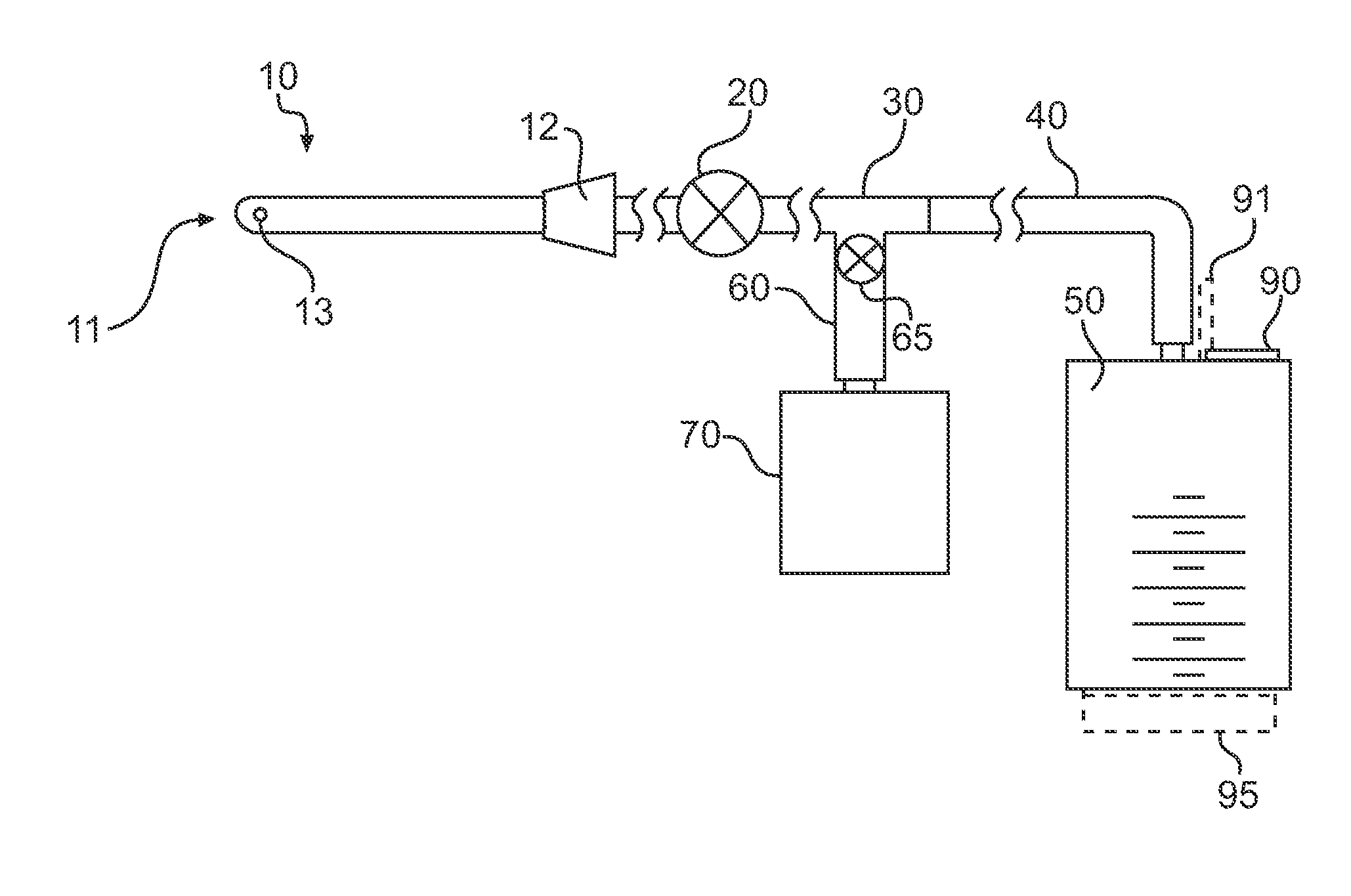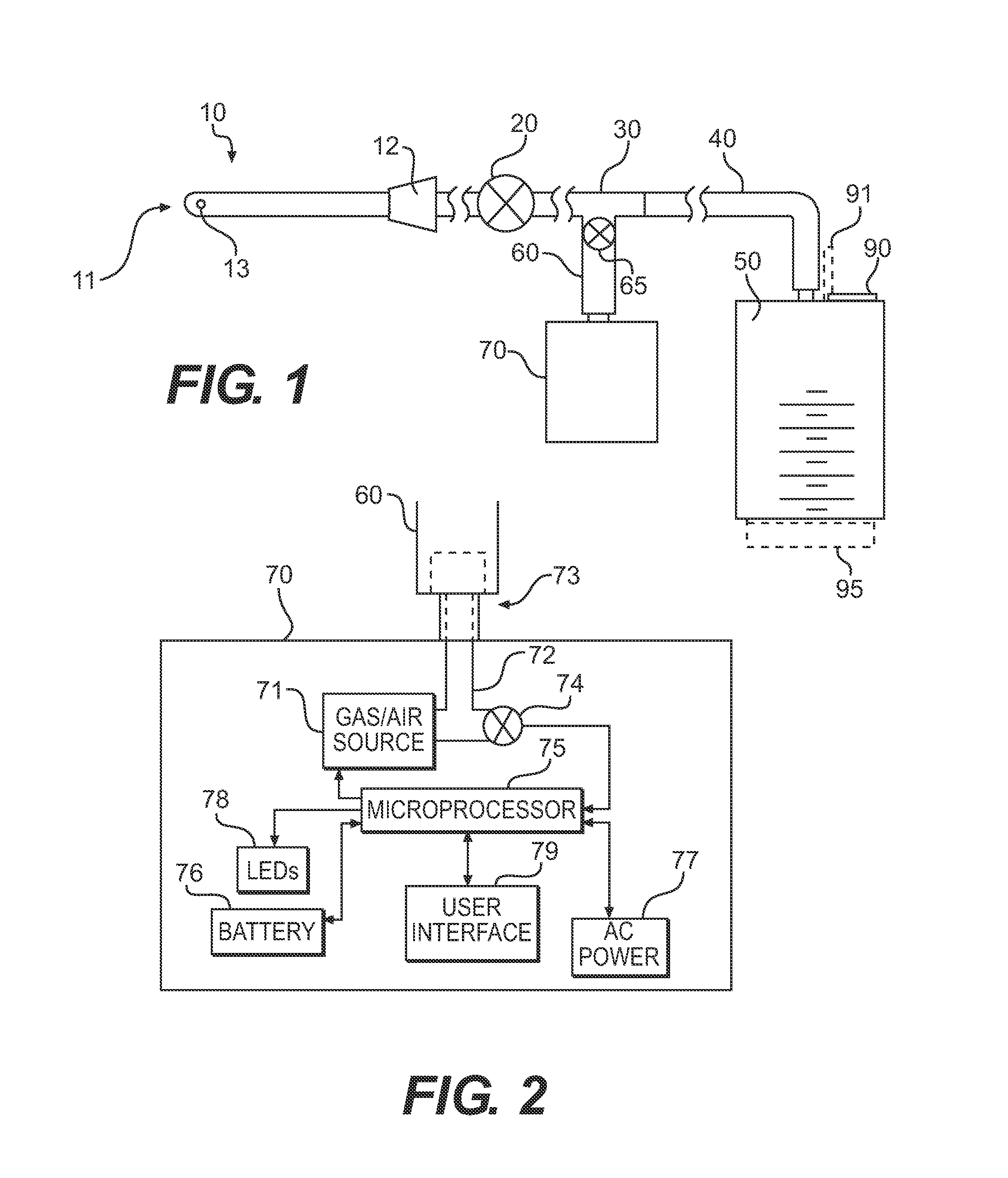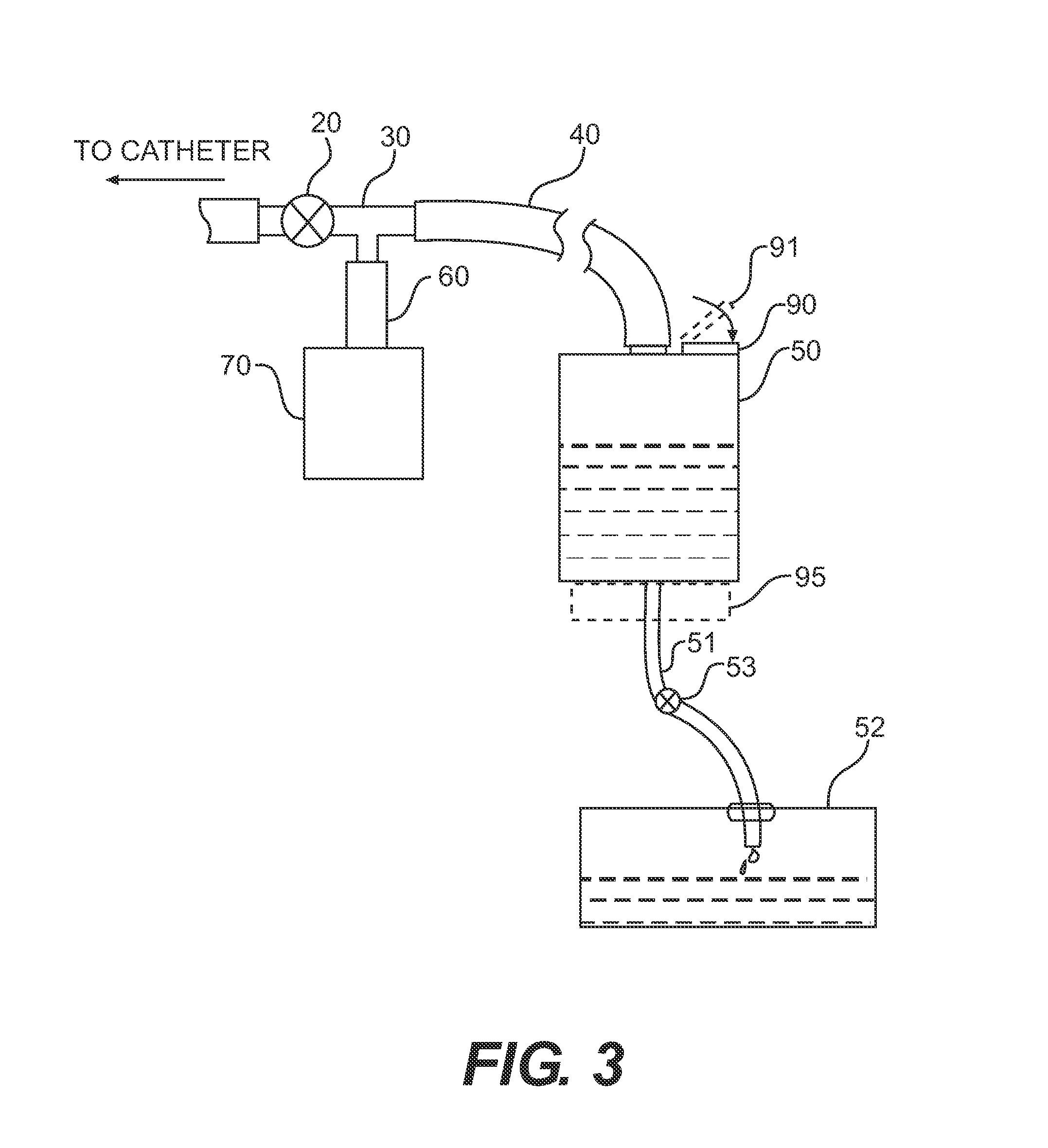Automated Method of Pooling Elimination with a Biological Fluid Collection System
a biological fluid and automatic method technology, applied in the field of automatic method of pooling elimination with biological fluid collection system, can solve the problems of difficult to accurately determine how much urine actually exited the bladder, significant amount of urine can remain, and urine output readings cannot be accurately determined in this way
- Summary
- Abstract
- Description
- Claims
- Application Information
AI Technical Summary
Benefits of technology
Problems solved by technology
Method used
Image
Examples
Embodiment Construction
[0040]The following description should be read with reference to the drawings, in which like elements in different drawings are identically numbered. The drawings, which are not necessarily to scale, depict selected embodiments and are not intended to limit the scope of the invention. The detailed description illustrates by way of example, not by way of limitation, the principles of the invention. This description will enable one skilled in the art to make and use the invention, and describes several embodiments, adaptations, variations, alternatives and uses of the invention, including what is presently believed to be the best mode of carrying out the invention.
[0041]As used herein, the reference terms “proximal” and “distal” (proximal being closer than distal) refer to proximity with respect to a health care professional catheterizing a patient. For example, the region or section of the catheter apparatus that is closest to the health care professional during catheterization is re...
PUM
 Login to view more
Login to view more Abstract
Description
Claims
Application Information
 Login to view more
Login to view more - R&D Engineer
- R&D Manager
- IP Professional
- Industry Leading Data Capabilities
- Powerful AI technology
- Patent DNA Extraction
Browse by: Latest US Patents, China's latest patents, Technical Efficacy Thesaurus, Application Domain, Technology Topic.
© 2024 PatSnap. All rights reserved.Legal|Privacy policy|Modern Slavery Act Transparency Statement|Sitemap



